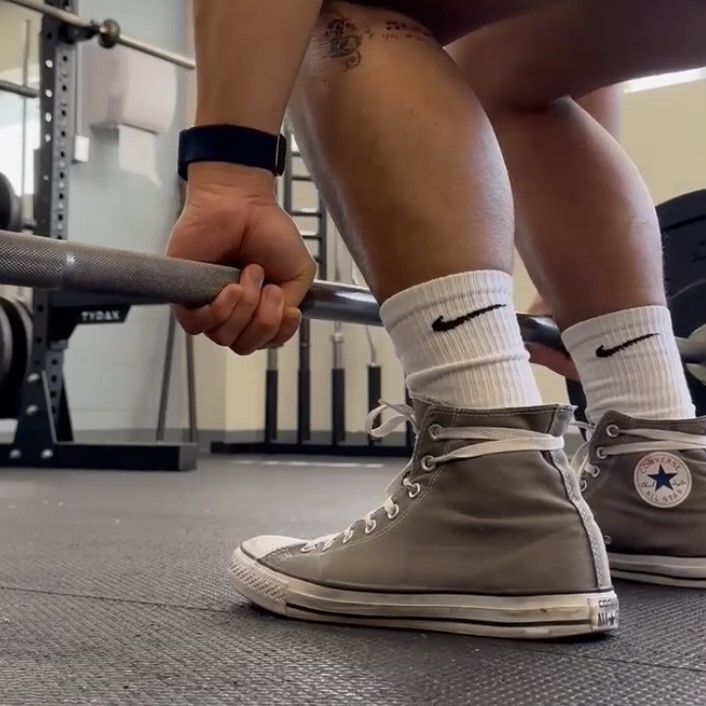Grip It And Rip It: Different Hand Grip Styles During Deadlifting
Deadlifts are one of the most effective exercises for building strength and muscle mass, particularly in the lower back, glutes, and legs. However, a recent study conducted by Pratt et al. (2020) suggests that the type of grip used during the exercise may affect the level of forearm muscle activity.
The study used electromyography (EMG), which is a technique that measures the electrical activity produced by muscle contractions. The researchers had 40 people perform the deadlifts with three different grip types: double overhand grip (DO), mixed grip (MG), and hook grip (HG).
A. 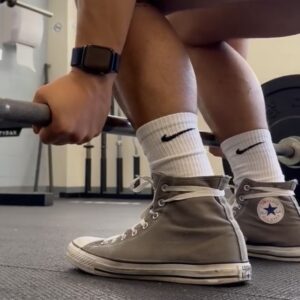 B.
B. 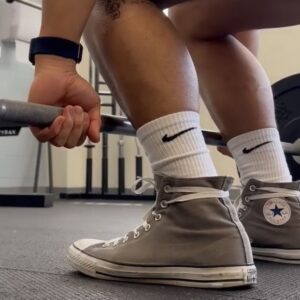 C.
C. 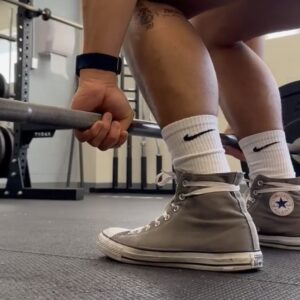
A. 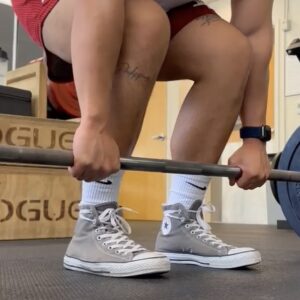 B.
B. 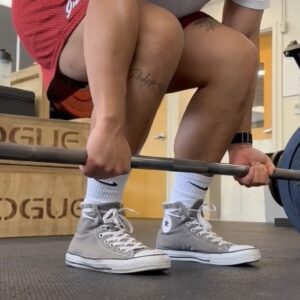 C.
C. 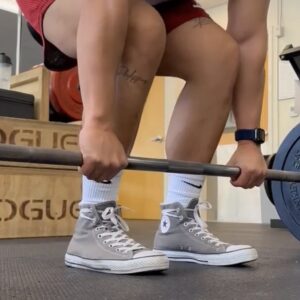
Figure 1: Three different grip types: A. double overhand grip (DO), B. mixed grip (MG), and C. hook grip (HG). The DO grip involves placing both hands on the bar with palms facing downwards, while the MG grip involves placing one hand with palm facing down and the other with palm facing up. The HG grip involves wrapping the thumb around the bar and then wrapping the fingers around the thumb and bar.
Results and Implications
The results of the study demonstrate that the type of grip used during the deadlift exercise had a significant effect on the level of forearm EMG activity. Specifically, the HG resulted in significantly higher forearm muscle activity than the DO grip, but the MG grip resulted in higher forearm muscle activity than both the DO and HG.
These findings have important implications for individuals who perform deadlifts as part of their training regimen. Some people see the deadlift at an exercise that solely targets the lower back, but don’t realize the important relationship that grip type has on increasing grip strength. Choosing the right grip type can affect the level of forearm activity and, in turn, the effectiveness of the exercise in building strength and muscle mass. In particular, the MG grip may be a more effective option for individuals looking to maximize their forearm muscle activation during deadlifts.
So, what does this mean for the weekend warrior looking to maximize their deadlifts? It means that the type of grip you use can affect the level of forearm muscle activation, and therefore, potentially the effectiveness of the exercise. If you’re looking to activate your forearm muscles more, consider using the mixed grip or hook grip instead of the double overhand grip.
Risks Associated With Grips
It’s essential to keep in mind that using the mixed or hook grip can increase the risk of injury, particularly to the biceps as discussed by Kapicioglu and colleagues in a 2021 study. The mixed grip can cause one arm to be in a supinated position, while the other is in a pronated position. This can lead to uneven stress on your biceps and increase the risk of a bicep tear. The hook grip can also put more stress on your thumb, which may lead to injuries, most commonly blister, calluses and rips to the skin.
One method that recreational and competitive lifters use to help protect their thumbs while utilizing the hook grip is by using tape. I’ve progressed to using RockTape’s HookGrip tape as an effective solution for providing a layer of protection between my thumb and the bar, which helps prevent blisters, calluses, and other injuries caused by repetitive friction or pressure. These are pre-cut so it makes it easy to keep in my gym bag and apply before moving to the barbell
Conclusion
In conclusion, the type of grip used during deadlifts can have a significant impact on the level of forearm muscle activity, and therefore, the effectiveness of the exercise for building strength and muscle mass. The mixed grip and hook grip resulted in higher levels of forearm muscle activity than the double overhand grip, making them a more effective option for individuals looking to maximize their forearm muscle activation during deadlifts. However, it’s important to remember that using these grips can also increase the risk of injury, particularly to the biceps and thumbs. Therefore, proper caution and preventive measures such as using tape can help minimize the risk of injuries and maximize the benefits of this powerful exercise
Aaron Wallace BSc, MSc, RockTape Ambassador
The information provided in this blog is for informational purposes only and should not be construed as medical advice. It is not intended to replace professional medical guidance, diagnosis, or treatment. Always seek the advice of a trained healthcare professional before making any changes to your medical treatment plan. The authors of this blog and the website on which it appears are not liable for any consequences arising from the use or reliance on the information provided.
References
Pratt J, Hoffman A, Grainger A, Ditroilo M. Forearm electromyographic activity during the deadlift exercise is affected by grip type and sex. Journal of Electromyography and Kinesiology. 2020 Aug 1;53:102428.
Kapicioglu M, Bilgin E, Guven N, Pulatkan A, Bilsel K. The role of deadlifts in distal biceps brachii tendon ruptures: an alternative mechanism described with YouTube videos. Orthopaedic Journal of Sports Medicine. 2021 Mar 19;9(3):2325967121991811.
